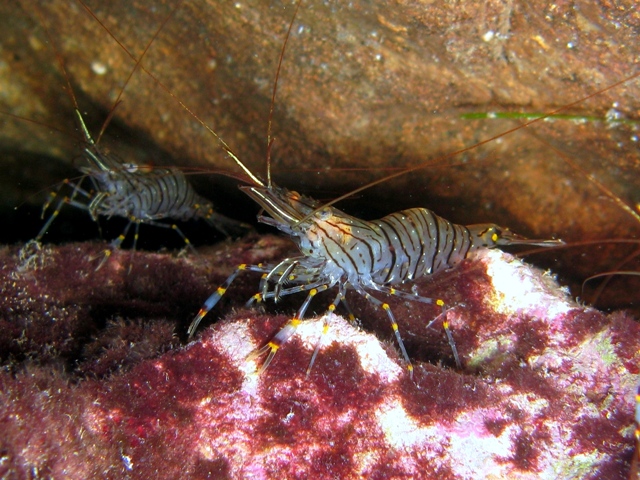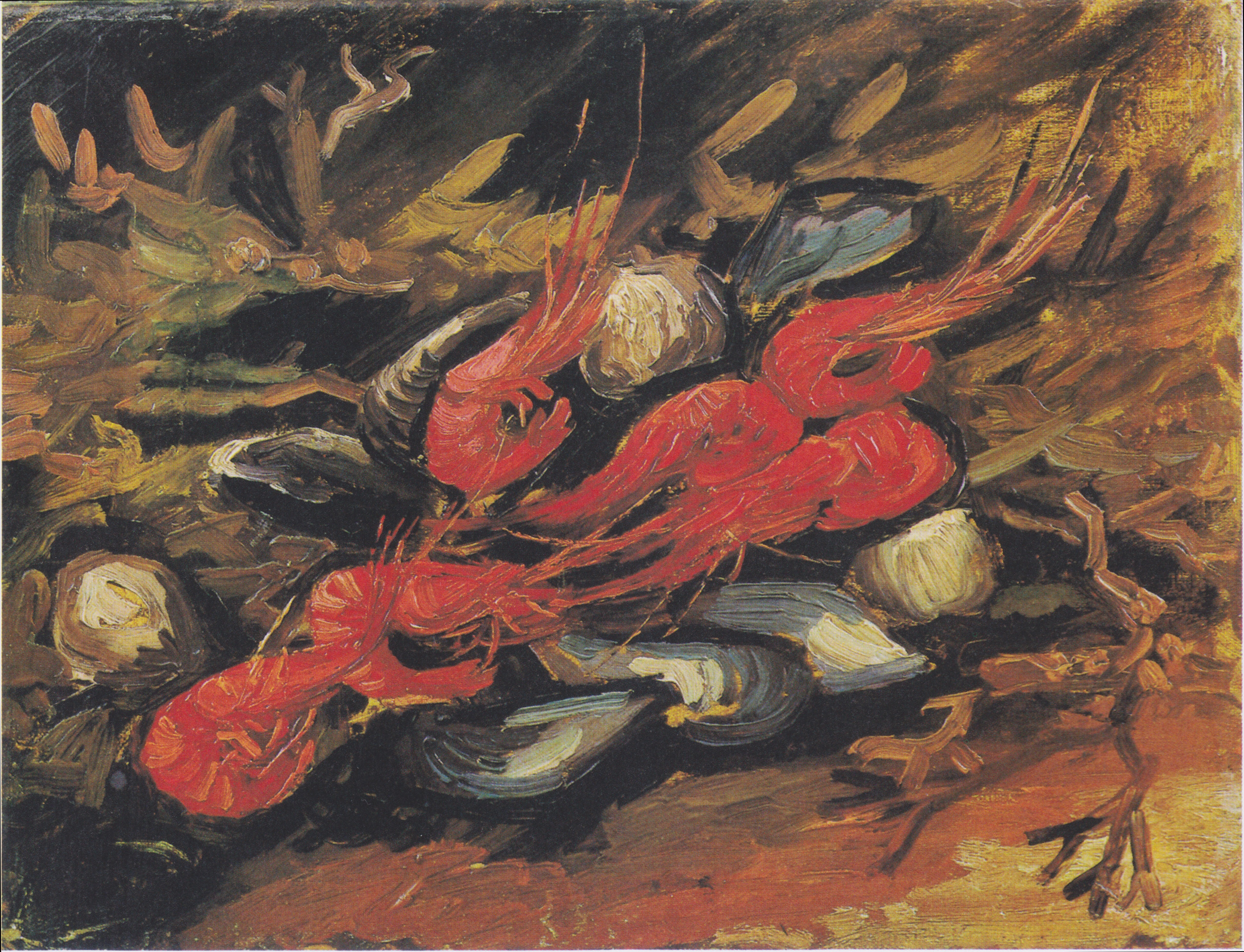|
Shrimp Marketing
Shrimp are marketed and commercialised with several issues in mind. Most shrimp are sold frozen and marketed based on their categorisation of presentation, grading, colour, and uniformity. Presentation The main forms of presentation are ''head-on shell on'' (''HOSO''), ''shell-on'' (''SO'' or "green headless shrimp"), ''peeled tail on'' (''PTO''), ''peeled undeveined'' (''PUD''), ''peeled and deveined'' (''P&D''), ''peeled deveined and tail on deveined'' (''PDTO'') and ''butterfly tail'' on (''BTTY-TO''). Sometimes a letter 'F' is placed in front of these abbreviations for the presentation in order to state that the shrimp comes from a farm (example: FSO – farmed, shell on). European and Asian markets prefer the HOSO presentation (which is a whole shrimp), while the American shrimp market prefers the remaining presentations. Grading Shrimp are graded according to their count per weight. HOSO shrimps are graded in units per kilogram (30/40, 40/50, 50/60, etc. pcs/kg). The ... [...More Info...] [...Related Items...] OR: [Wikipedia] [Google] [Baidu] |
Shrimp
A shrimp (: shrimp (American English, US) or shrimps (British English, UK)) is a crustacean with an elongated body and a primarily Aquatic locomotion, swimming mode of locomotion – typically Decapods belonging to the Caridea or Dendrobranchiata, although some Shrimp#Non-decapods, crustaceans outside of this order are also referred to as "shrimp". Any small crustacean may also be referred to as "shrimp", regardless of resemblance. More narrow definitions may be restricted to Caridea, to smaller species of either of the aforementioned groups, or only the Marine life, marine species. Under a broader definition, ''shrimp'' may be synonymous with prawn, covering stalk-eyed swimming crustaceans with long, narrow muscular tails (Abdomen#Arthropoda, abdomens), long whiskers (Antenna (biology), antennae), and slender, Biramous, biramous legs. They swim forward by paddling the swimmerets on the underside of their abdomens, although their escape response is typically repeated flicks wit ... [...More Info...] [...Related Items...] OR: [Wikipedia] [Google] [Baidu] |
Marketing
Marketing is the act of acquiring, satisfying and retaining customers. It is one of the primary components of Business administration, business management and commerce. Marketing is usually conducted by the seller, typically a retailer or manufacturer. Products can be marketed to other businesses (B2B Marketing, B2B) or directly to consumers (B2C). Sometimes tasks are contracted to dedicated marketing firms, like a Media agency, media, market research, or advertising agency. Sometimes, a trade association or government agency (such as the Agricultural Marketing Service) advertises on behalf of an entire industry or locality, often a specific type of food (e.g. Got Milk?), food from a specific area, or a city or region as a tourism destination. Market orientations are philosophies concerning the factors that should go into market planning. The marketing mix, which outlines the specifics of the product and how it will be sold, including the channels that will be used to adverti ... [...More Info...] [...Related Items...] OR: [Wikipedia] [Google] [Baidu] |
Aquaculture (journal)
''Aquaculture'' is a peer-reviewed scientific journal covering research on aquaculture, published by Elsevier. It was established in 1972. The journal ''Annual Review of Fish Diseases'', separately published from 1991 to 1996, was incorporated into ''Aquaculture'' following the cessation of its separate publication. ''Aquaculture'' is indexed by AGRICOLA, Animal Breeding Abstracts, Aquatic Sciences & Fisheries Abstracts, Biological Abstracts, BIOSIS BIOSIS Previews is an English-language, bibliographic database service, with abstracts and citation indexing. It is part of ''Clarivate Analytics Web of Science'' suite. BIOSIS Previews indexes data from 1926 to the present. BIOSIS Previews i ... Previews, CAB Abstracts, and Water Resources Abstracts.Becky ThompsonResearch Journals: Aquaculture, U.S. Department of Agriculture National Agricultural Library, March 2010 References External links * {{Authority control Aquaculture Elsevier academic journals Academic journals es ... [...More Info...] [...Related Items...] OR: [Wikipedia] [Google] [Baidu] |
NCI Steamed Shrimp
NCI can stand for: * Non-controlling interest (Minority interest), in accounting, minority ownership in a subsidiary corporation * National Cancer Institute, American medical research agency * National Captioning Institute, American non-profit organization providing captioning for film and TV * National Computational Infrastructure National Facility (Australia), Australia’s national research computing service * National College of Ireland, college in Dublin, Ireland * Native Communications, Inc., Aboriginal public broadcasting service in Manitoba, Canada * National Coastwatch Institution, UK voluntary coastwatch organisation * North Coast Institute of TAFE, university system in New South Wales, Australia * Negative chemical ionization, chemical technique used in mass spectrometry * Noarlunga Centre railway station, a railway station in Adelaide, Australia * nCi, abbreviation for nanocurie, a unit of radioactivity * ''Noi con l'Italia'' ("Us with Italy Us with Italy (, NcI) ... [...More Info...] [...Related Items...] OR: [Wikipedia] [Google] [Baidu] |
Shrimp (food)
Shrimps and prawns are types of shellfish seafood that are consumed worldwide. Prawns and shrimps are crustacea and are very similar in appearance with the terms often used interchangeably in commercial farming and wild fisheries. A 1990s distinction made in Indian aquaculture literature, which increasingly uses the term "prawn" only for the freshwater forms of palaemonids and "shrimp" for the marine penaeids that belong to different suborders of Decapoda. This has not been universally accepted. In the United Kingdom, the word "prawn" is more common on menus than "shrimp", whereas the opposite is the case in North America. Also, the term "prawn" is loosely used for larger types, especially those that come 30 (or fewer) to the kilogram — such as "king prawns", yet sometimes known as "jumbo shrimp". In Britain, very small crustaceans with a brownish shell are called shrimps, and are used to make the traditional English dish of potted shrimps. Australia and some other Commonwea ... [...More Info...] [...Related Items...] OR: [Wikipedia] [Google] [Baidu] |
Kilogram
The kilogram (also spelled kilogramme) is the base unit of mass in the International System of Units (SI), equal to one thousand grams. It has the unit symbol kg. The word "kilogram" is formed from the combination of the metric prefix kilo- (meaning one thousand) and gram; it is colloquially shortened to "kilo" (plural "kilos"). The kilogram is an SI base unit, defined ultimately in terms of three defining constants of the SI, namely a specific transition frequency of the caesium-133 atom, the speed of light, and the Planck constant. A properly equipped metrology laboratory can calibrate a mass measurement instrument such as a Kibble balance as a primary standard for the kilogram mass. The kilogram was originally defined in 1795 during the French Revolution as the mass of one litre of water (originally at 0 °C, later changed to the temperature of its maximum density, approximately 4 °C). The current definition of a kilogram agrees with this original defini ... [...More Info...] [...Related Items...] OR: [Wikipedia] [Google] [Baidu] |
Pound (mass)
The pound or pound-mass is a unit of mass used in both the British imperial and United States customary systems of measurement. Various definitions have been used; the most common today is the international avoirdupois pound, which is legally defined as exactly , and which is divided into 16 avoirdupois ounces. The international standard symbol for the avoirdupois pound is lb; an alternative symbol (when there might otherwise be a risk of confusion with the pound-force) is lbm (for most pound definitions), # ( chiefly in the U.S.), and or ̶ (specifically for the apothecaries' pound). The unit is descended from the Roman (hence the symbol ''lb'', descended from the scribal abbreviation, '). The English word ''pound'' comes from the Roman ('the weight measured in '), and is cognate with, among others, German , Dutch , and Swedish . These units are now designated as historical and are no longer in common usage, being replaced by the metric system. Usage of the un ... [...More Info...] [...Related Items...] OR: [Wikipedia] [Google] [Baidu] |
Habitat (ecology)
In ecology, habitat refers to the array of resources, biotic factors that are present in an area, such as to support the survival and reproduction of a particular species. A species' habitat can be seen as the physical manifestation of its ecological niche. Thus "habitat" is a species-specific term, fundamentally different from concepts such as environment or vegetation assemblages, for which the term "habitat-type" is more appropriate. The physical factors may include (for example): soil, moisture, range of temperature, and light intensity. Biotic factors include the availability of food and the presence or absence of predators. Every species has particular habitat requirements, habitat generalist species are able to thrive in a wide array of environmental conditions while habitat specialist species require a very limited set of factors to survive. The habitat of a species is not necessarily found in a geographical area, it can be the interior of a stem, a rotten log, ... [...More Info...] [...Related Items...] OR: [Wikipedia] [Google] [Baidu] |
List Of Harvested Aquatic Animals By Weight
This is a list of aquatic animals that are harvested commercially in the greatest amounts, listed in order of tonnage per year (2012) by the Food and Agriculture Organization. Species listed here have an annual tonnage in excess of 160,000 tonnes. This table includes mainly food fish species, but also listed are crustaceans (crabs and shrimps), cephalopods (squids and cuttlefishs), bivalves, and a reptile (softshell turtle). Note that '' Oreochromis niloticus'' and ''Penaeus monodon'' appear twice, because substantial amounts are harvested from the wild as well as being extensively raised through aquaculture. Summary The 70 wild species shown in this table total 41,925,250 tonnes. Other wild species total 49,410,980 for a world total of 91,336,230 tonnes of wild, captured animals. The 31 cultivated species shown in this table total 45,252,999 tonnes. Other cultivated species total 21,380,254 tonnes for a world total of 66,633,253 tonnes of animals cultivated through aquaculture ... [...More Info...] [...Related Items...] OR: [Wikipedia] [Google] [Baidu] |





